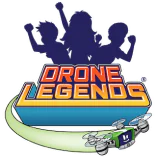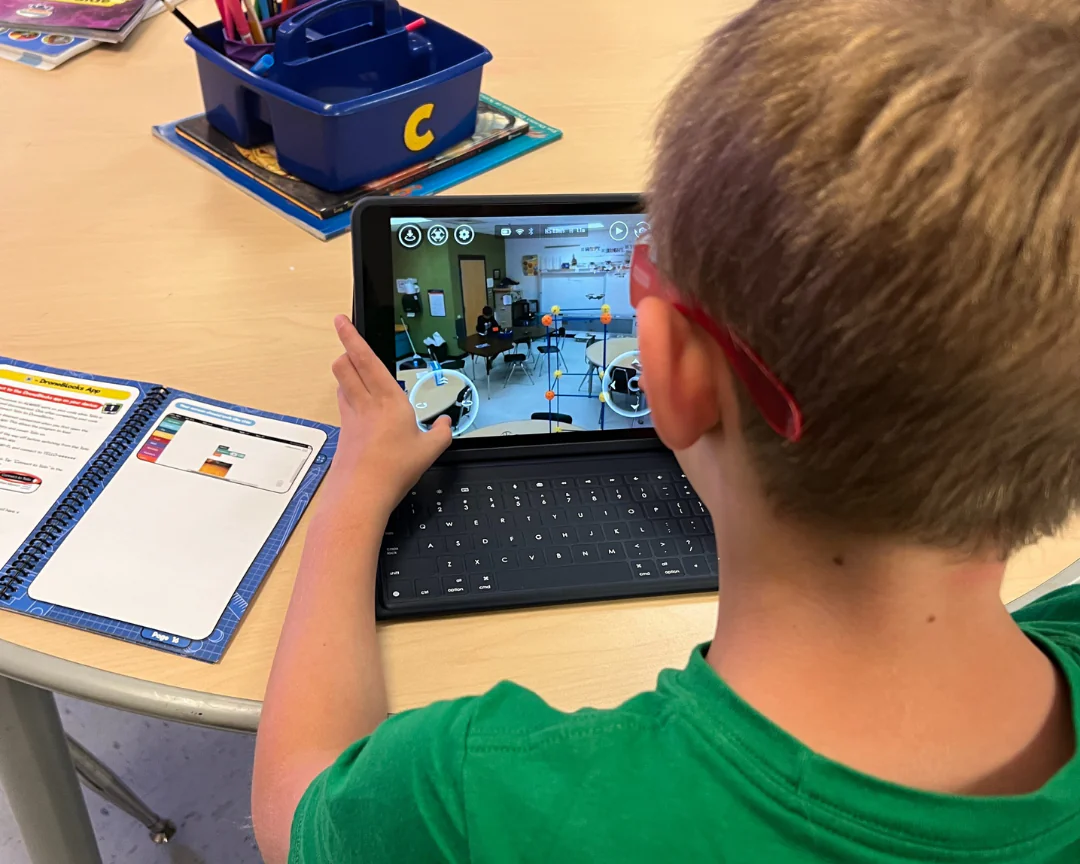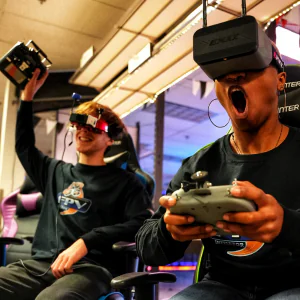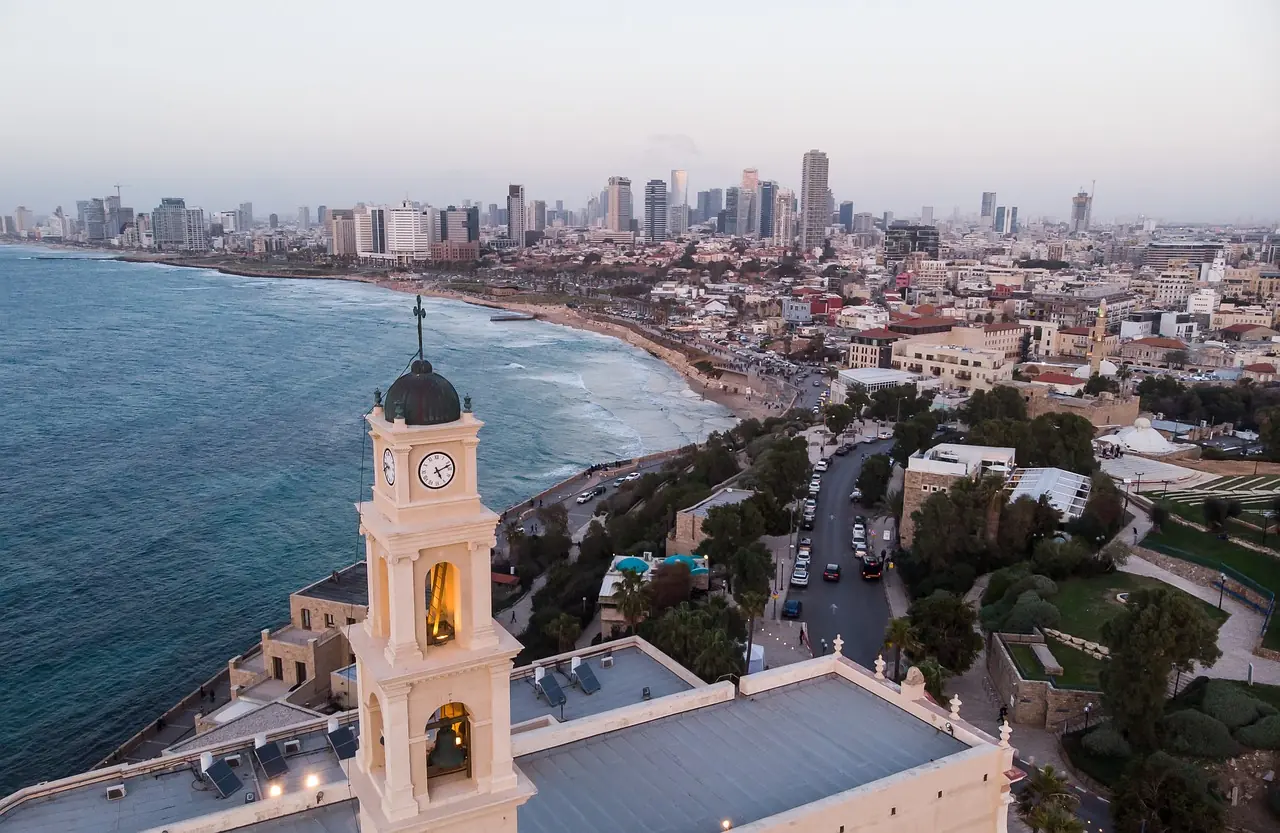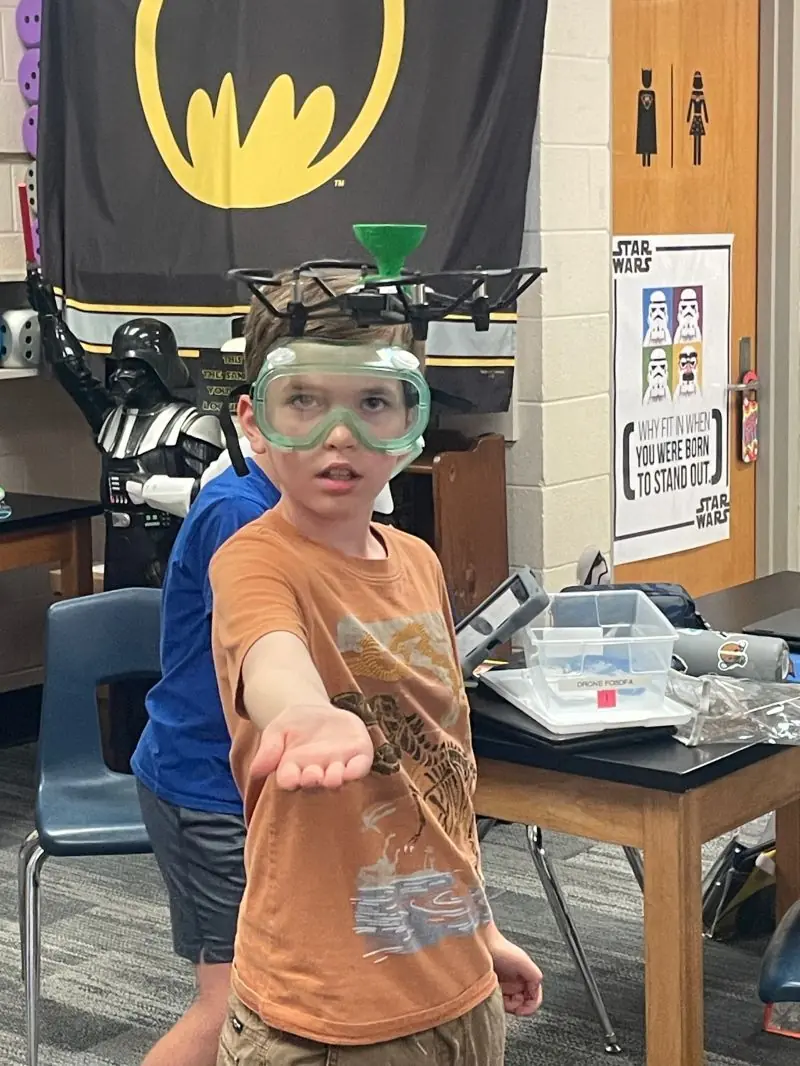The first step to enjoying all the possibilities drones bring is learning to fly one properly. From military missions to at-home entertainment, drones are becoming a regular tool in society. STEM projects increasingly rely on drone operators, and basic drone navigation is sure to become common knowledge among students and future innovators.
Whether it be in schools, enrichment programs, or at home, here’s how you can start learning to fly a drone.
Want to help kids learn how to fly drones at school? The Drone Legends Educator Lesson Planner is the perfect place to start.
Learn to Fly a Drone
First, you must know the restrictions of drone navigation in your area. Some cities and school districts have unique rules regarding drones. The Federal Aviation Administration (FAA) also has guidelines on what passes as recreational and educational drone flying, as opposed to license-required piloting.
Once you know the rules and your drone meets the criteria for safe flying, here’s how to start.
Note: Learning to fly drones isn’t as easy as it looks, so remember to go slow– and practice!
Basic Drone Flying Tips
For safety, follow these tips for beginners:
- Practice flying on a clear day with minimal wind speed.
- Find a flight area free of obstacles such as power lines or trees. An open field or large park is ideal.
- Never fly above large crowds. Avoid disturbing people and private property.
- Pay attention. This isn’t a time to scroll through your phone or multitask.
- Fly low, slow, and steady until you’re more comfortable with your drone.
- Crashes are inevitable, so consider bringing extra propellers.
- Always keep your drone in your line of sight.
Know Your Drone Controls
Start with the foundations: understanding your drone and its controls. Identify the front (or head) of the drone. Inspect the propellers, battery, and frame to ensure everything is ready to fly.
Different drone controllers have different functions and features. Some have one-click tricks or emergency stops. Overall, there are four drone control terms:
- Roll: Moves the drone left or right.
- Pitch: Tilts the drone forward or backward.
- Yaw: Rotates the direction of the front of the drone.
- Throttle: Powers the propellers to increase or decrease the altitude of the drone.
Note that unless you can change the settings to headless mode (not recommended for the serious drone pilot!), navigation controls the drone in the direction it faces.
Practice Takeoff & Landing
Practice taking off and landing before flying your drone. Getting these two basic skills down will help you navigate all other functions. Lift off the ground using the throttle. Then, test the other controls slightly to gauge sensitivity. Slowly release the throttle to land. Repeat as necessary.
Learn to Hover
Most drones today feature an altitude hold that hovers the drone in place after takeoff or when idle, so the old method of learning to hover has become somewhat obsolete. However, if you are looking to get into FPV racing altitude hold has no benefit to the way the drone is flown since the course of the race will have varying altitudes and numerous obstacles to navigate. The additional components for altitude hold would add weight to the drone and reduce its speed. To learn to hover, focus on throttle. You may get the hang of hovering your drone mid-air the more your practice takeoff and landing. If your drone turns too much in the air, adjust the yaw control to try to keep the drone in place. Learning to hover is essential for drone racing!.
Test Different Directions
Once you know how to hover, try flying your drone a few feet in each direction and then hovering again. You can practice flying in the shape of a circle, square, or side-to-side. You’ll notice what changes you need to make as your drone tilts or spins out of place. Crashing or cutting the throttle also teaches you how you can improve your drone flight next time.
Plan a Mission
When you become more familiar with drone flying as a beginner, why not go on a few mini-missions? Pick a destination further away and go for it. Fly the drone there and back, or land it at its destination (as long as it’s in your sight).
Drone Flight Training Resources Near Me
There are plenty of online instructional videos and YouTube channels that help new drone pilots learn how to fly well. You can practice on your own, learning through trial and error. Or you can get a group of friends to learn together, exchanging feedback, tips, and encouragement.
If you want to get a drone pilot’s license to fly a wider variety of missions, you need to pass the FAA’s TRUST safety test. There are UAV (unmanned aerial vehicle) coaches and training programs where you can learn from an expert in-person, which is ideal if you ever want to fly drones for commercial or photography purposes.
Learning Your Drone Remote Control
You can learn to fly a drone using different controllers. Some drones operate using radio transmitter controls, others can be operated using a smartphone app or tablet.
If you have a hard time learning how to fly your drone, you can try different drone controllers. Some people find touchscreen controllers easier and more effective, while others prefer the traditional handheld “joystick” controls.
Coding Drone Flight Paths
To make drone flying education more fun and challenging, consider coding a drone flight path. Apps such as Drone Blocks allow hobbyist drone pilots to program designated missions and code custom commands. If you’re tech-savvy or interested in teaching STEM through drones, coding is an excellent way to provide more robust drone flight lessons.
Best Drone for Learning to Fly
Need help deciding which drone to learn with for beginners? Drones for kids and beginner pilots are your best option.
The best drones to learn on have these features:
- Ease of flight
- Propeller replacement
- Lightweight
- Chargeable battery
- Simple controller
A popular option for beginners is the Ryze Tello Drone. It has everything you need to learn how to fly a drone and leaves room to work your way up to more advanced flight settings.
Click here to learn more about the best drones for kids and beginners.
Learn Drone Repair
Crash landings happen to even the most skilled drone pilots. The best thing you can do is know how to land to prevent extreme damage, and know the basic repairs.
To learn drone repair, learn about your drone inside and out. Propeller repairs are the most common type of drone repair so it’s common for drone pilots to have extra supplies on hand for quick repairs.
Learning to Fly a Drone (and Become a Legend)
The best way to learn how to become a savvy drone pilot is to learn from passionate drone educators. Learn on your own, learn as a group, or learn alongside your classroom: Drone Legends flight programs give you everything you need to start using drones for everyday STEM lessons and beyond. To get started with the best drone lessons for you, reach out to Drone Legends today– where we help you and your students become legends.
